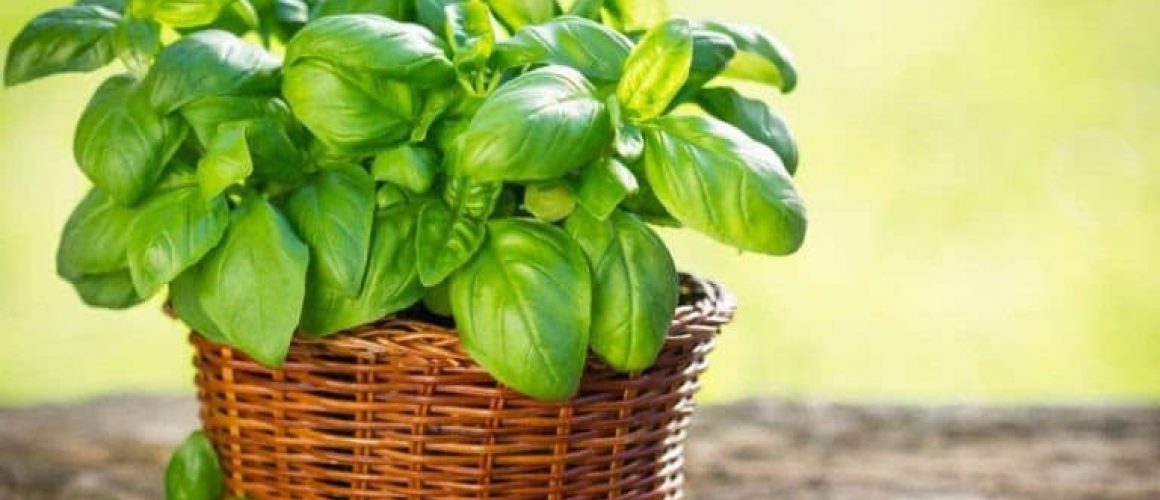Basil

Basil is a timeless and always a favourite choice for summer balconies in our country.
Its leaves are dark green and glossy, beautifying the pot where it has been planted.
Why would you want a royal in your home?
Apart from being one of the summer flowers with the most beautiful fragrance, basil also has a practical use.
Its leaves are used as a flavouring in various recipes, but it also has insect repellent properties.
Especially these properties are very important in the summer, when there are more insects roaming our homes.
Even if you don't resort to fumigation, basil will help you get rid of some pesky insects.
The only important requirement that basil has in summer is for water.
It needs watering every day, but with small amounts of water each time.
Basil is one of the most popular and beloved aromatic plants used in Mediterranean cuisine.
In every courtyard and balcony of Greek houses, you will find a basil planted in a pot, giving off its special aroma.
It is a fact that basil cultivation has its own peculiarities, so if you have had a basil that dried up in the past, don't be disappointed.
It's time to reveal the secrets of its care to enjoy the unique aroma and distinct taste of fresh basil leaves in our kitchen.
Where can basil be grown?
Plant basil in semi-shaded places sheltered from strong winds to ensure good growth and lush green foliage.
Especially in winter, basil needs protection from frost, snow and winds.
Basil thrives in bright places, but is sensitive to long periods of direct sun exposure.
The strong summer sun rays can cause burns on basil leaves.
If we plant basil in a pot on our balcony, we prefer a position with a west or east exposure.
What is a suitable planting medium for basil?
If you plant basil in a garden, it requires light, fertile soil with good drainage.
The incorporation of well-digested manure and compost into the soil helps significantly in the development of the root system of basil, as well as for the gradual growth of its foliage.
To grow basil in a pot, we can make our own potting soil using peat, manure, and perlite in a 3:1:1 ratio.
Alternatively, for planting basil in a pot you can use a special soil for herbs enriched with nutrients.
What are the most well-known basil varieties?
There are many types and varieties of basil to choose from.
There are hundreds of varieties of basil, some with smaller or larger leaves, with different colours, flavours and aromas.
Depending on our preferences, we can choose curly, broadleaf, genovese, nihato, red (purple), holy or tree basil.
For example, if we want basil for pesto sauce, we choose flat-leaf basil, while if we want basil that can withstand the winter frost, the best choice is the Athonite basil, which is perennial and thrives for at least 3-4 years.
It is important to mention that most basil varieties are annuals.
How is basil planting done?
Basil can be planted directly from seed, as well as with ready-made basil plants grown in a nursery or purchased from nurseries.
To sow basil, plant a few seeds directly in the garden soil or in the pot, about one centimetre deep in early spring, and wait 1-2 weeks for it to germinate.
A good time for sowing basil outdoors is in early March.
If you are growing basil plants in a seedbed or buying ready-made plants from nurseries, April-May is a good time for transplanting.
When transplanting ready-made basil plants, we add a solution of algae extract that we will buy in order to have a better development of the root system of the plants.
What watering does basil need?
Watering basil is perhaps the most important cultivation task for it to grow and thrive.
Water basil frequently, every 2-3 days, in small quantities, and on hot summer days on a daily basis.
It is necessary to check the soil with your finger before watering and only repeat watering the basil when the soil is dry.
Many basil plants dry out, showing yellowing of the leaves and rotting of the roots caused by overwatering.



